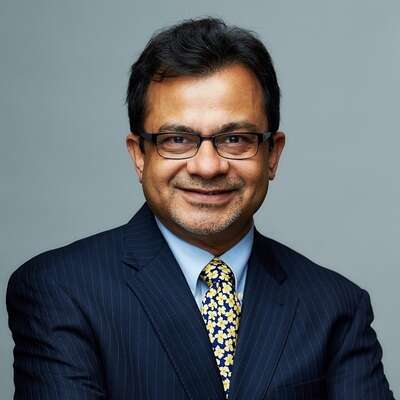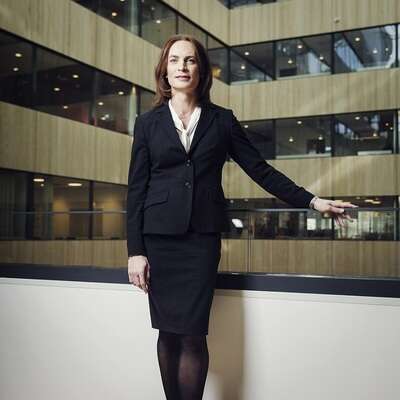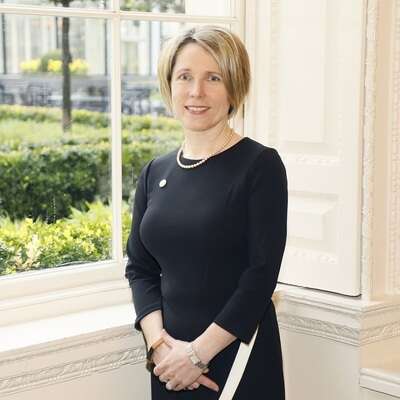DSM’s Managing Director, Austria and Global Director of Emissions Value Management Dr. Heinz Flatnitzer discusses managing the environmental impact of agriculture and the need for collaborative models
Boyden's Leadership Series presents discussions with business and thought leaders from organizations across the globe. The series focuses on topical issues that offer executives, political leaders and the media insight into current trends in business and talent management in the global marketplace.
This issue features Dr. Heinz Flatnitzer, Managing Director, Global Director Emissions Value Management, Royal DSM. In the interview, he discusses animal nutrition and health, the supply chain from farm to customer, the evolving role of banks, and how scientific approaches and data solutions can improve the environmental footprint of agriculture.
Dr. Flatnitzer has over two decades' experience in leadership roles developing new initiatives for customer benefit, and ensuring successful implementation, particularly in sustainability.
Prior to DSM, Dr. Flatnitzer was Director of the Executive Board at Erber Group, and previously Manager at Accenture in the energy and financial sector. He holds a doctorate from Vienna University of Economics and Business, and studied International Finance, Marketing and Information Technology at New York University.
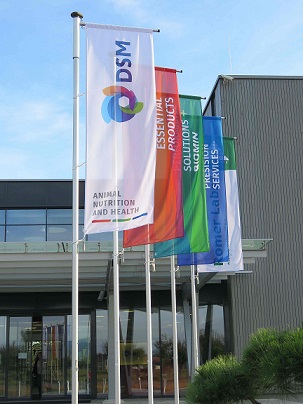
From century-old roots as the Dutch State Mines, Royal DSM has evolved into a purpose-led science company numbering 23,000 people worldwide and specializing in solutions for Health, Nutrition & Bioscience. DSM’s purpose is to create brighter lives for all. The company is proud that its name has assumed a new meaning among its people in recent years: Doing Something Meaningful.
Business lines: Animal nutrition & health; Human nutrition & care; Food & beverage. For more visit https://dsm.com
Boyden: As Managing Director in Austria and Global Director, Emissions Value Management, what is the scope of your role?
Flatnitzer: As Austrian Managing Director, I steer country-specific activities while representing DSM to local stakeholders. My function as Global Director of EV Management is formally assigned to the Animal Nutrition and Health unit – however, this topic is relevant across the full value chain. The environmental footprint can only be addressed adequately if all players work together. Thus, I am well connected internally from both upstream (i.e. agriculture), processing (e.g. dairy companies, processors), CPG and Food Service companies to the retail sector. We also cooperate with stakeholders in the eco-system surrounding the value chain, e.g., banks, insurance companies and eco-label organizations. Our goal is to support and transform the full value chain with our solutions, as we see there are many structural changes and business models required to make the sector sustainable. A crucial part of my role is to develop the expertise of internal managers and external stakeholders and unlock value creation that helps shift to more sustainable food systems.
The Precision Services division utilizes data to ensure efficiency in agriculture.
The Precision Services division utilizes data to ensure efficiency in agriculture. For example, Sustell™ helps our customers to measure and reduce the environmental footprint of livestock farming. My role, together with the team, is to drive this further.
This is notable because the environmental impact of livestock varies from farm to farm.
By providing credible and scientific ways to measure the environmental footprint at the farm level, along with suggestions on how to improve overall sustainability, we enable farmers to implement changes that are stable and remain in place, rather than focus on individual farm animals where the biology is more complex.
This highlights the benefits of a ‘triple win’; partnership, environment, and business model, which increases the uptake of companies to pursue sustainable actions with tangible benefits.

A collaborative initiative between DSM and a Dutch company creates added value for customers through increased expertise and increased access to farm-specific data. Through this collaborative initiative, we can focus on the full value chain across the sector.
Banks are looking to support sustainable initiatives by managing their net-zero loan portfolios or developing green finance projects. They are asking the same question to investors, retailers, consumers and regulators: how do you accurately measure the sustainability of animal farming?
Boyden: What are the key tenets of Emissions Value Management at DSM?
Flatnitzer: The key tenet for EVM first and foremost is credibility. Doing this relies on scientific-based methodologies, real farm-specific data (rather than general industry averages), and third-party ISO certification.
Data protection and giving data owners control over their data is another. It’s not difficult in emissions management to get sustainability data, but the key question is, ‘is it reliable or robust enough to improve on in the future?’.
While greenhouse gases receive the greatest attention, the full environmental footprint is more comprehensive and goes beyond carbon emissions, covering land use, water, biodiversity and more. Understanding the full picture allows for carbon reduction and less unintended negative consequences such as water pollution and other land usage issues.

Boyden: DSM has pledged to purchase all its electricity from renewable sources, with stringent new 2030 sustainability targets. How can this be achieved?
Flatnitzer: By adopting a continuous approach to reduce our overall footprint. We look at optimising all areas of the business and customer offerings. We identified the need to focus more on renewables, changing the energy mix when we purchase our energy e.g., in the US we already use 100% renewable energy.
Our action is guided by our beliefs and desire to contribute to healthy people, healthy incomes, and a healthy planet. So, we set ourselves ambitious science-based targets as well as food system commitments.
Boyden: You have extensive experience in overseeing functional leadership on the board. How do you achieve a cohesive approach to ESG across HR, Operations, IT, and Corporate Communications?
Flatnitzer: Sustainability is an integral part of our work at DSM, ensuring that our commitment to ESG is owned and is lived throughout the organization; as is ensuring our strategy is included in all internal and external communications.
While we are held accountable to mandatory emissions targets, our ethos ensures we meet emissions reduction targets, while offering support to strategic partners.
Boyden: What can we learn from game theory, relating to your thesis on ‘a game-theoretic model for bilateral emissions trading’?
Flatnitzer: The basis for my thesis was my interest in the factors that impact the price for bilateral/voluntary emissions trading. It’s not a market with lots of buyers and sellers; it’s very thin and illiquid with only a few players and trades taking place bilaterally, buyer to seller.
You must anticipate what someone might do based on your interaction. How do I use information from different information levels, how do I include in my discussions the risk appetite of another party? Based on that, you adjust your activities. Thinking in the way of game-theoretic formulas has helped define emissions trading, its implications, and the decision drivers.
It was a coincidence and an opportunity that I ended up in this field. I had board responsibility for HR and operations, and in the middle of the integration of Biomin and DSM, the President of ANH called me. He was so passionate about transforming the industry and unlocking opportunities in new fields. With this and my PhD, I was made a member of the emissions task force and started working on collaborative models to build up the Animal Nutrition and Health business.
Boyden: How are you approaching supply chain disruption in the current environment?
Flatnitzer: Flexibility, using a global production network, and working closely with customers is key. Increasing communications and collaboration with customers and shipping partners allows us to accurately identify and forecast stock levels.
For safety stock, we have certain consumption patterns for our products, so orders are based on that info. Our operations teams face challenges but manage to ensure we always serve our customers.
Boyden: What are the challenges you face in your role, particularly with regard to talent?
Flatnitzer: It’s important to provide opportunity and develop from within. Particularly true when trying to ensure there are no capability gaps in your organization. A huge challenge is when you need experts, as there are more open roles for these people than individuals to fill them. However, you can potentially bypass this hurdle by honing and sharpening your existing talent.
A huge challenge is when you need experts, as there are more open roles for these people than individuals to fill them.
Visibility is also key for large businesses. We created a platform where you can enter your skills, preferences and mobility, so an HR colleague anywhere in the world might see your name come up when searching for talent. There is a lot of opportunity in job rotation, and often people don’t stay in one role for years, they move to something else, to get more experience or learn new skills.
Boyden: What are the key attributes you look for when hiring senior executives?
Flatnitzer: We look for people who are passionate about what they do. They must have a willingness to learn and welcome new opportunities and development. They need to have a good balance between being people and results-focused, and they should be courageous in how they make decisions, being at the forefront of our field.
Boyden: What are the major challenges in the food/feed sector?
Flatnitzer: The largest challenge is ensuring access to healthy food as we minimize the imbalance, with 2.3 billion members of the population being overweight or obese, compared to 800 million who are under-nourished.
There’s also an imbalance in the agricultural sector where 75 percent of agricultural workers are very poor and have an income of less than USD 10.000 per year.

With these sectors contributing to a quarter of all GHG emissions, it is a major challenge to ensure food is produced sustainably. Organizations are being driven less by regulation and more by consumers wanting transparency on the nutritional value of a product and its environmental impact.
An important question is ‘who pays for this?’ and ‘Is the consumer willing to pay?’. I believe all participants along the value chain are willing to invest in more sustainable ways to produce food products if they can be sure that the activities help our planet and people.
There are certain directives, frameworks and guidelines, and a new eco-labelling directive for Europe will be published in 2024, which will give the industry some guidance. This is important because consumers are overwhelmed; it is not easy to distinguish between labels, e.g. ‘organic’ and ‘sustainable’, as organic farming does not necessarily always lead to less resource consumption or a lower environmental footprint.
Banks play a role here because they have emissions targets related to their portfolios, and can play an active role in steering customers toward more sustainability. They can actively steer financing of investments by clear sustainability criteria, provided they have reliable data.
The drive for sustainable food is felt throughout the value chain – producers hold the keys
Sustainable products in the dairy sector were launched about ten years ago with price differences, including premium pricing. You can’t have the highest quality, the best sustainability and the cheapest price. It’s a balance in knowing how to innovate to feed the population. The current situation now, is not sustainable; producers at the farm stage have high upstream costs in order to produce sustainably. We need to understand how to work together and share both the gains and the pains of this whole situation; for example, how can these costs be distributed along the value chain, rather than remaining at the farm stage which requires so much investment, even though the benefit does not always land there.
Boyden: What are the possible solutions here?
Flatnitzer: Feeding the population sustainably requires accurate measurement, and improving the health and productivity of farm animals through innovation. Multiple innovation centers owned by DSM allow innovation at different levels. There is central innovation, through a research center in Austria employing 150 researchers and also in Kaiseraugst in Switzerland, using the latest building standards. Innovation also takes place regionally, with customer trials to improve solutions further.
Credible, science-based innovation is the solution
Climate change is a major element. What is alarming is the trend in how temperatures and sea levels are rising. We see this in the different temperatures we experience and extremely dry summers, driven largely by human behavior accelerating this trend. There are natural fluctuations in the climate, but it is increasingly unstable and we are imposing changes that cannot be accommodated.
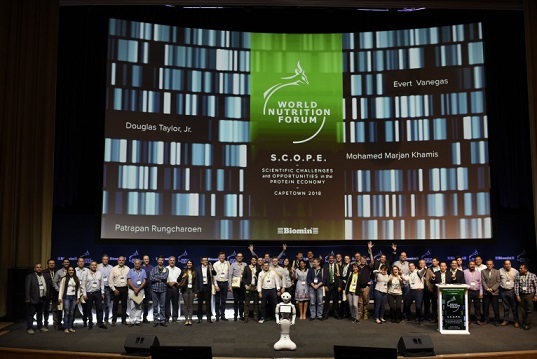
DSM's biennial World Nutrition Forum, on Scientific Challenges and Opportunities in the Protein Economy
That’s why credible, science-based innovation is the solution; we have more than thirty experts globally in sustainability and more than a thousand nutrition experts who can support customers and other people in the field on nutritional detail. DSM is moving much closer to its customers, and the trend is to get as close as possible.
We would like to thank Kerstin Roubin, Managing Partner of Boyden Austria, EMEA Regional Practice Leader, Healthcare & Life Sciences and Global Sector Leader, Consumer Health, for making this edition of Boyden's Leadership Series possible. The views and opinions expressed here are those of Dr. Flatnitzer and do not necessarily represent the views of Boyden.


